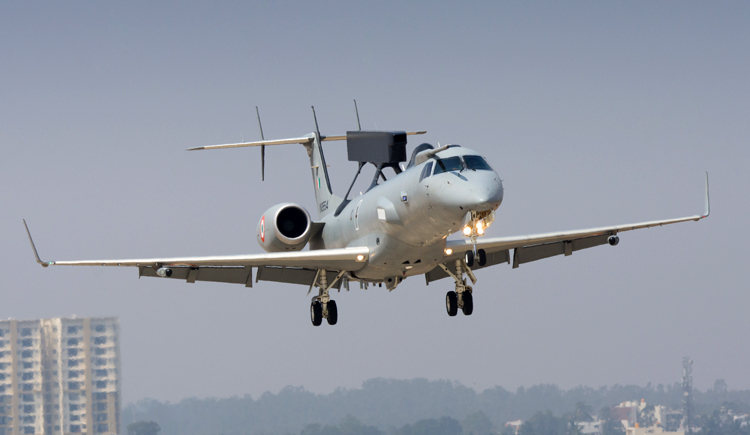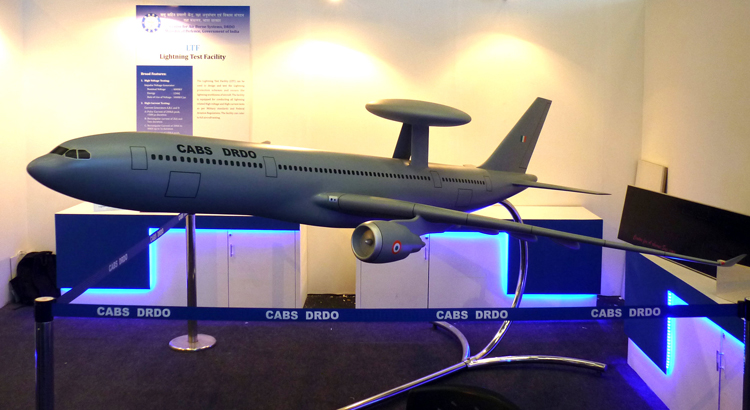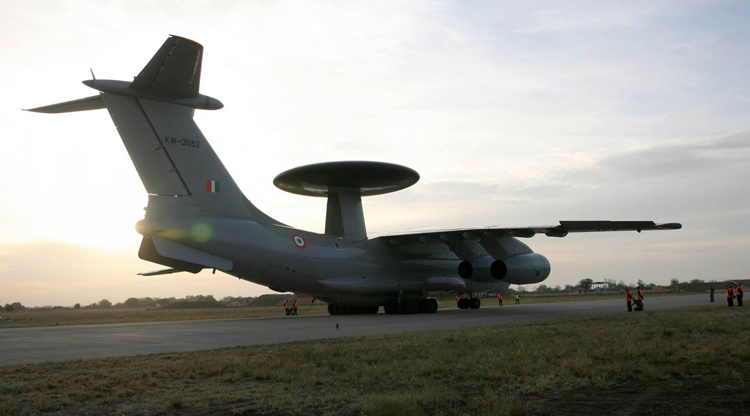INDIAN ARMED FORCES CHIEFS ON OUR RELENTLESS AND FOCUSED PUBLISHING EFFORTS

The insightful articles, inspiring narrations and analytical perspectives presented by the Editorial Team, establish an alluring connect with the reader. My compliments and best wishes to SP Guide Publications.

"Over the past 60 years, the growth of SP Guide Publications has mirrored the rising stature of Indian Navy. Its well-researched and informative magazines on Defence and Aerospace sector have served to shape an educated opinion of our military personnel, policy makers and the public alike. I wish SP's Publication team continued success, fair winds and following seas in all future endeavour!"

Since, its inception in 1964, SP Guide Publications has consistently demonstrated commitment to high-quality journalism in the aerospace and defence sectors, earning a well-deserved reputation as Asia's largest media house in this domain. I wish SP Guide Publications continued success in its pursuit of excellence.
- Prime Minister Modi Visits Punjab’s Adampur Air Base, Interacts with Airmen after Successful ‘Operation Sindoor’; Stern Message to Pakistan
- The layered Air Defence systems that worked superbly, the key element of Operation Sindoor
- Operation Sindoor | Day 2 DGMOs Briefing
- Operation Sindoor: Resolute yet Restrained
- India's Operation Sindoor Sends a Clear Message to Terror and the World – ‘ZERO TOLERANCE’
- Japan and India set forth a defence cooperation consultancy framework, talks on tank and jet engines
ISTAR Programme and EWA
India is working on the Intelligence, Surveillance, Target Acquisition & Reconnaissance (ISTAR) programme with the US under the India-US Defence Technology and Trade Initiative (DTTI)
 |
The Author is Former Director General of Information Systems and A Special Forces Veteran, Indian Army |

It has been reported in these columns earlier that Airborne Early Warning and Control (AEW&C) Block 2 aircraft are being developed by the Defence Research and Development Organisation (DRDO) under a 10,500 crore project. For this, six aircraft are being acquired from the Air India fleet and modified to fly with a radar that will give 360-degree surveillance capability to the Indian Air Force (IAF). A government source had said, "The six AEW&C block two planes would be highly capable, more than their predecessor NETRA planes, and provide 360-degree coverage deep inside the enemy territory during missions. The government is expected to clear the project soon."
ISTAR aircrafts use artificial intelligence (AI), integrated onboard sensors and advanced processing to provide critical information on enemy movements
The report of December last year quoting a government source had also said that the project to build the AEW&C system on existing aircraft from the Air India fleet may also mean that India may not buy the six Airbus 330 transport aircraft planned to be acquired earlier from a European firm. The DRDO had earlier planned to build six Airborne Warning and Control System (AWACS) on the Airbus 330 aircraft for which some facilities were planned to be created in Bengaluru.

The report had further said that that the six aircraft procured from Air India would be sent to a European destination to the original equipment manufacturer (OEM) for modification of the planes for installing the radar and that the project has been planned in a way to promote ‘Make in India’ in defence and ‘Atmanirbhar Bharat’. With Air India transferring the Tata Group by December 2021, it is presumed that the DRDO would have procured the six aircraft already.
The good news now is that India is working on the Intelligence, Surveillance, Target Acquisition & Reconnaissance (ISTAR) programme with the US under the India-US Defence Technology and Trade Initiative (DTTI). This was stated by Air Chief Marshal V.R. Chaudhari, Chief of Air Staff on October 5, 2021 ahead of the Air Force Day. The DTTI was formed in 2012 between the US and India, to enhance the bilateral relations in defence by venturing into the field of advanced defence research and development and manufacturing. The aim was to strengthen the US and India’s defence industrial base by moving away from the traditional buyer-seller dynamic toward a more collaborative approach; exploring new areas of technological collaboration through co-development and co-production.
The six additional AEW&C block two planes plus the indigenous ISTAR will be a big boost to the surveillance capabilities of the IAF especially along the borders with China and Pakistan
ISTAR aircrafts use artificial intelligence (AI), integrated onboard sensors and advanced processing, rapidly and at long range to provide critical information on enemy movements, dispositions and communications in real time, equipping commanders with a clear, multi-faceted picture of the changes in the battlefield to take the right decisions. It can also provide battlefield management and command-and-control processing capability, helping in planning and executing missions. The platform can help track mobile ground targets, map natural disaster areas, monitor vessels to enforce maritime embargoes and keep an eye on activities near borders and littoral areas.
The ISTAR to be developed by India will use multiple intelligence or multi-INT technology, implying that data from multiple sensors across the spectrum will be combined to draw a complete picture of the situation on the battlefield. Such a system also gives significantly more coverage than a radar-only system, even double in some cases. The DRDO’s Centre for Airborne Systems has been working on the sensors package required for the development of the platform.
The J-16D is the first dedicated electronic warfare aircraft in the People’s Liberation Army-Air Force (PLAAF) which undertakes jamming and destroying enemy radars and communication networks
The IAF presently has three PHALCON AWACS systems ex import in which the radar is provided by the Israel is whereas the platform used is Russian in the Ilyushin-76 transport aircraft. In addition, two NETRA aircraft provided by the DRDO are also in service with the IAF. The six additional AEW&C block two planes plus the indigenous ISTAR will be a big boost to the surveillance capabilities of the IAF especially along the borders with China and Pakistan. The time schedule for developing the ISTAR is not known but certainly the government will be top priority. The IAF reportedly wants a mix of 20 AWAC/AEW&CS, which being prime targets by the enemy certainly need redundancy.

In a recent significant development, China has deployed its J-16D electronic warfare aircraft (EWA) at an airbase in Jiangxi province near Taiwan. Modeled on the US Navy’s EF-18 Growler EWA, the J-16D is the first dedicated electronic warfare aircraft in the People’s Liberation Army-Air Force (PLAAF) which undertakes jamming and destroying enemy radars and communication networks, thus enabling strike aircraft to destroy targets without fear of coming up against enemy air defence systems. Participating at the recently concluded air-show at Zhuhai, the J-16D was observed carrying electronic warfare pods under each wing and under each air intake. Also, there are pods with very prominent antennas visible on the wingtips. The primary armament of the aircraft possibly will be anti-radiation missiles akin to the American AGM-88 HARM, which can home in on enemy’s radar signals to destroy it.
It is evident that China is rapidly acquiring new military technologies and weapons to dominate the Indo-Pacific region.
Deployment of the J-16D near Taiwan signals China’s growing resolve to unify Taiwan with mainland China as articulated by Chinese President Xi Jinping recently. It is evident that China is rapidly acquiring new military technologies and weapons to dominate the Indo-Pacific region. Without doubt China will deploy the J-16D in other theaters as well including opposite Ladakh giving an edge to the PLAAF since the IAF doesn’t have a dedicated platform having capabilities of the J-16D. The IAF has three Gulfstream III aircraft for electronic warfare and gathering electronic intelligence but little capability to fly into enemy territory during conflict. That task is solely the preserve of EWA based on combat aircraft platforms.
Without an EWA we could be at disadvantage in a war with China and more so in a two-front war with China-Pakistan. Therefore, it is imperative that concurrent to the ISTAR programme, India must focus on procuring-cum-developing EWAs in sufficient numbers.





